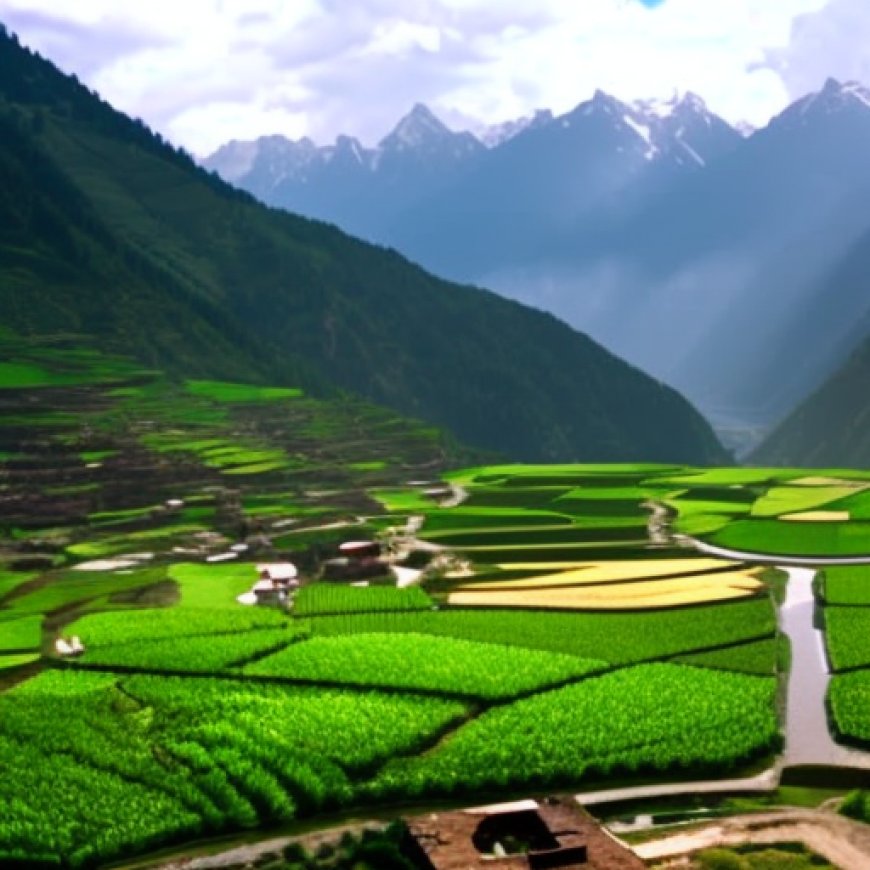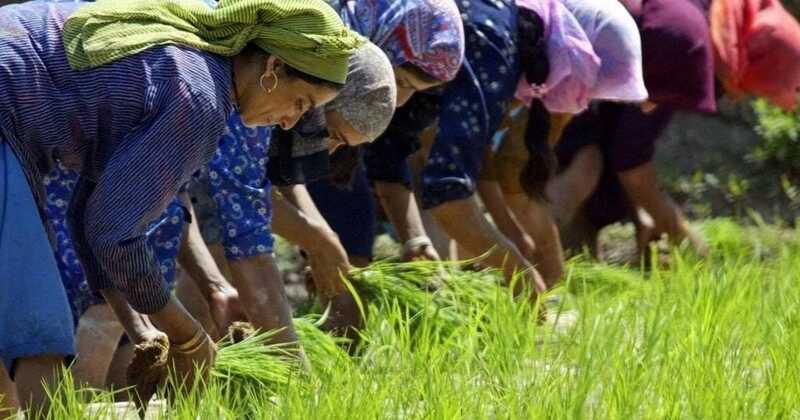Four years after Article-370 revocation, Jammu and Kashmir flourishes in agricultural development
Four years after Article-370 revocation, Jammu and Kashmir flourishes in agricultural development Organiser


Unprecedented Development in Jammu and Kashmir’s Agriculture Sector

After August 5, 2019, when Prime Minister Narendra Modi-led dispensation ended the 70-year-long status quo by merging Jammu and Kashmir completely into the Union of India, Jammu and Kashmir’s agriculture sector is witnessing an unprecedented development.
Clearing Impediments for Farmers
The Government, after August 5, 2019, has worked hard to clear the impediments that prevented the farmers from making ends meet. From quality seeds to on-spot help, the UT administration ensured to make agriculture a sustainable and remunerative economic activity for farmers at affordable prices. Their efforts yielded results as the quality of the crops has improved, and farmers are getting a good price for their yield.
Top 5 States/UT in Monthly Farming Revenue
Agriculture reformations have helped Jammu and Kashmir UT to score in the top 5 states/UT in terms of monthly farming revenue. Due to market-trends-oriented farming, horticulture is now a sustainable economic activity.
Limitless Potential in Agriculture
“Look, if we talk about the agri sector of Jammu and Kashmir, we have limitless potential in agriculture. Be it the green revolution, or providing a helping hand to farmers, the contribution of the Government and Krishi Vigyan Kendras have changed the way of farming in JK in an innovative way,” Ghulam Mohammad Mir, a farmer from the Kreeri area of north Kashmir’s Baramulla district said.
Centrally Sponsored Schemes
Union Territory has not only achieved a new height of agricultural ground, but the farmer welfare schemes sponsored by PM Modi, such as Kissan Sammaan Nidhi, Kissan Fasal Bima Yojna, PMKSY, e-NAM, SVAMITVA Yojana, etc. have helped to double the farmer’s income.
Transforming Subsistence Agriculture into Sustainable Commercial Agriculture
The Government is putting in all the efforts to transform subsistence agriculture into a sustainable commercial agriculture economy with an emphasis on ecosystem services and restoration and sustainable utilization of biodiversity.
Success Stories and Women Empowerment
Chasfida, an agri-entrepreneur, hailing from Palhallan area of north Kashmir’s Baramulla district, is all praise for the officials of the Department of Agriculture. Her efforts have not only changed her fortunes, but she has become a role model for other women who visit her for advice.
Recently, a successful woman Agri-entrepreneur from Baramulla, Safina Mushtaq made news by starting with mushroom cultivation and eventually diversified into flower seedlings and protected cultivation.
Promoting Agripreneurship and Employment Opportunities
Nearly 70 per cent of the population in Jammu and Kashmir is directly or indirectly engaged in agricultural and allied activities. The Government has embarked on the mission to promote ‘agripreneurship’ as a means of high return and respectable employment. High-density plantation, nutrient management, and widespread adoption of integrated dairy farming schemes are among the other initiatives that have been taken in the past three years. A strong framework is being developed for farmer-industry connection. It is generating employment opportunities for rural youth to bridge the rural-urban divide. Facilities like cold storage, market linkages, and setting up of food-processing units are encouraging more and more people to become agri-entrepreneurs.
(with inputs from ANI)
SDGs, Targets, and Indicators in the Article
1. Which SDGs are addressed or connected to the issues highlighted in the article?
- SDG 1: No Poverty
- SDG 2: Zero Hunger
- SDG 5: Gender Equality
- SDG 8: Decent Work and Economic Growth
- SDG 12: Responsible Consumption and Production
- SDG 15: Life on Land
2. What specific targets under those SDGs can be identified based on the article’s content?
- SDG 1.2: By 2030, reduce at least by half the proportion of men, women, and children of all ages living in poverty in all its dimensions according to national definitions.
- SDG 2.3: By 2030, double the agricultural productivity and incomes of small-scale food producers, in particular women, indigenous peoples, family farmers, pastoralists, and fishers, including through secure and equal access to land, other productive resources and inputs, knowledge, financial services, markets, and opportunities for value addition and non-farm employment.
- SDG 5.a: Undertake reforms to give women equal rights to economic resources, as well as access to ownership and control over land and other forms of property, financial services, inheritance, and natural resources, in accordance with national laws.
- SDG 8.3: Promote development-oriented policies that support productive activities, decent job creation, entrepreneurship, creativity, and innovation, and encourage the formalization and growth of micro-, small-, and medium-sized enterprises, including through access to financial services.
- SDG 12.3: By 2030, halve per capita global food waste at the retail and consumer levels and reduce food losses along production and supply chains, including post-harvest losses.
- SDG 15.2: By 2020, promote the implementation of sustainable management of all types of forests, halt deforestation, restore degraded forests, and substantially increase afforestation and reforestation globally.
3. Are there any indicators mentioned or implied in the article that can be used to measure progress towards the identified targets?
- Indicator for SDG 1.2: Proportion of population living below the national poverty line
- Indicator for SDG 2.3: Agricultural productivity growth rate
- Indicator for SDG 5.a: Proportion of women with ownership or secure rights over agricultural land
- Indicator for SDG 8.3: Proportion of informal employment in non-agriculture employment
- Indicator for SDG 12.3: Food loss index
- Indicator for SDG 15.2: Forest area as a proportion of total land area
Table: SDGs, Targets, and Indicators
| SDGs | Targets | Indicators |
|---|---|---|
| SDG 1: No Poverty | 1.2: By 2030, reduce at least by half the proportion of men, women, and children of all ages living in poverty in all its dimensions according to national definitions. | Proportion of population living below the national poverty line |
| SDG 2: Zero Hunger | 2.3: By 2030, double the agricultural productivity and incomes of small-scale food producers, in particular women, indigenous peoples, family farmers, pastoralists, and fishers, including through secure and equal access to land, other productive resources and inputs, knowledge, financial services, markets, and opportunities for value addition and non-farm employment. | Agricultural productivity growth rate |
| SDG 5: Gender Equality | 5.a: Undertake reforms to give women equal rights to economic resources, as well as access to ownership and control over land and other forms of property, financial services, inheritance, and natural resources, in accordance with national laws. | Proportion of women with ownership or secure rights over agricultural land |
| SDG 8: Decent Work and Economic Growth | 8.3: Promote development-oriented policies that support productive activities, decent job creation, entrepreneurship, creativity, and innovation, and encourage the formalization and growth of micro-, small-, and medium-sized enterprises, including through access to financial services. | Proportion of informal employment in non-agriculture employment |
| SDG 12: Responsible Consumption and Production | 12.3: By 2030, halve per capita global food waste at the retail and consumer levels and reduce food losses along production and supply chains, including post-harvest losses. | Food loss index |
| SDG 15: Life on Land | 15.2: By 2020, promote the implementation of sustainable management of all types of forests, halt deforestation, restore degraded forests, and substantially increase afforestation and reforestation globally. | Forest area as a proportion of total land area |
Behold! This splendid article springs forth from the wellspring of knowledge, shaped by a wondrous proprietary AI technology that delved into a vast ocean of data, illuminating the path towards the Sustainable Development Goals. Remember that all rights are reserved by SDG Investors LLC, empowering us to champion progress together.
Source: organiser.org

Join us, as fellow seekers of change, on a transformative journey at https://sdgtalks.ai/welcome, where you can become a member and actively contribute to shaping a brighter future.







